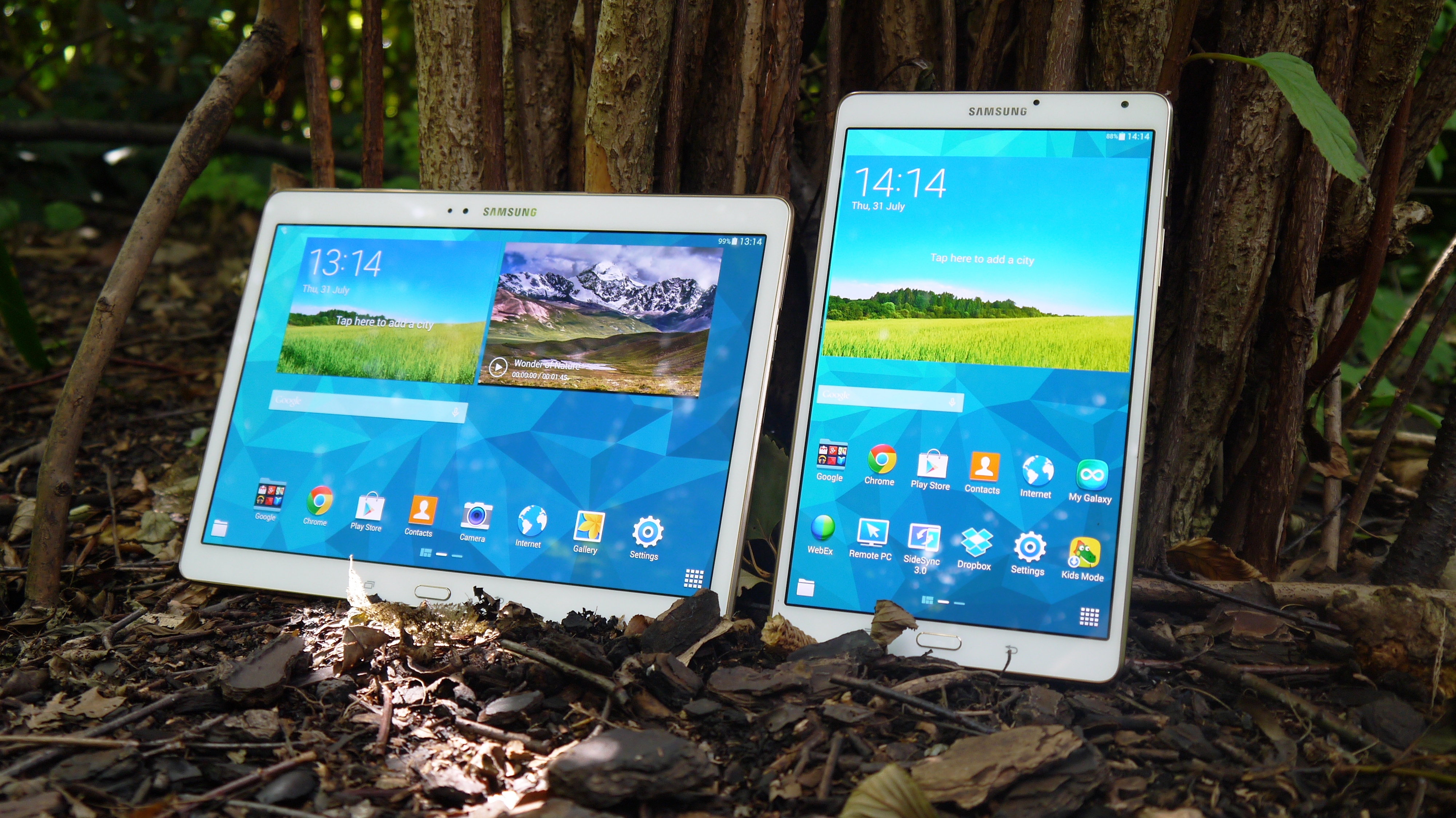Why you can trust TechRadar
The Tab S tablets look and feel fine, managing to be unspectacular but easy on the eye. At 294g or 465g they shave a few grams off the mini range (although the Air 2 is nearly the same weight), although they don't quite have the same 'wow' factor that Apple's slabs do.
These are more functional in design, though by no means ugly, and have Samsung's fingerprints all over them - meaning solid build but if you're looking for an innovative design revolution then you've come to the wrong place.
The faux metal border that provides some variety to the all-plastic body, and the pock-marked textured back are now Samsung staples — the Tab S is essentially the Galaxy S5 writ large.
I'm not sure anyone would ever pick one over the iPad in terms of aesthetics, but the design is perfectly acceptable... in the same vein that a mid-range family car isn't bad to look at. White and brown models are available.
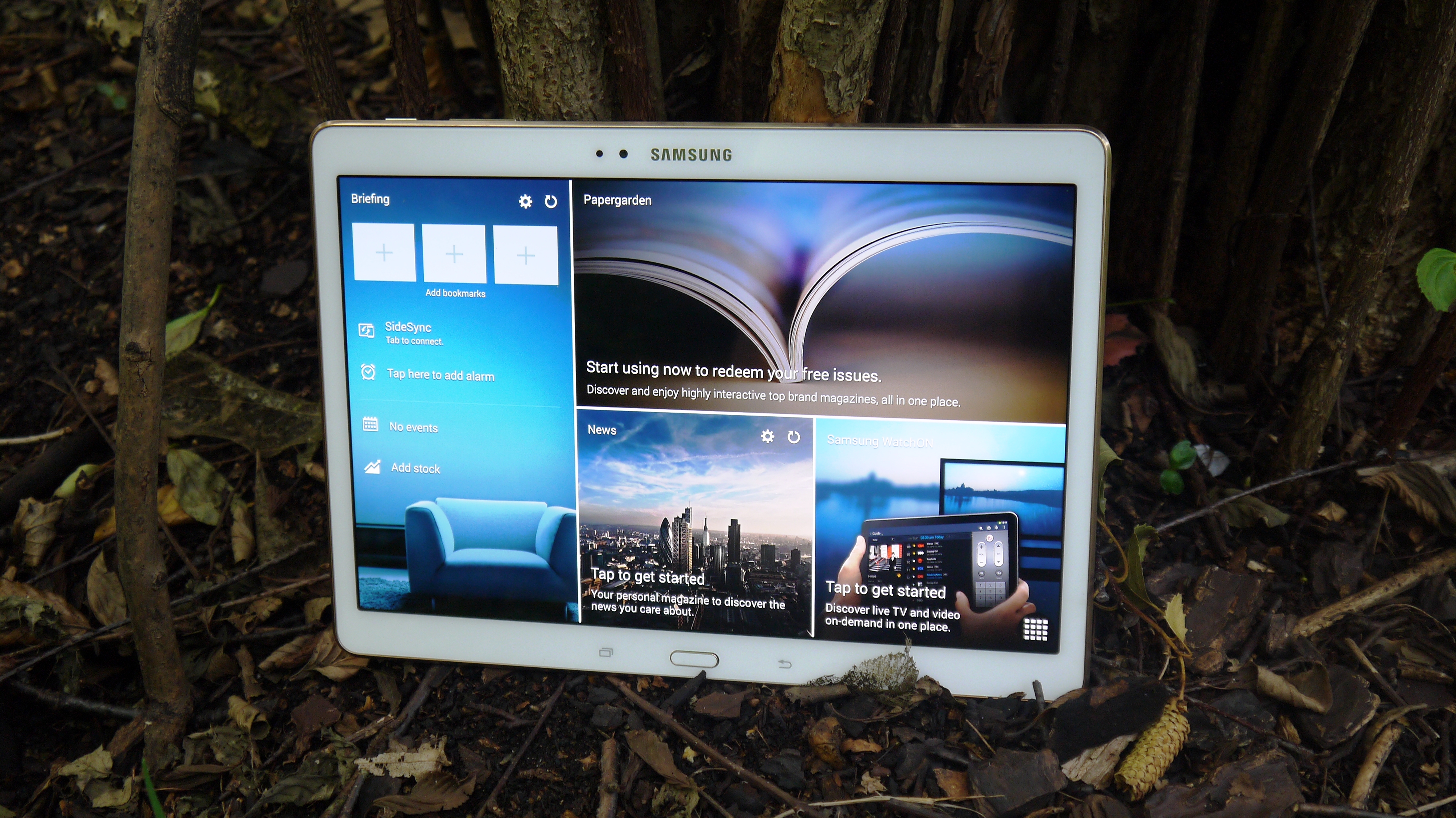
Superb screen
The screen, on the other hand, is exceptional — it's a joy to look at and use. Again, this is no surprise coming from Samsung, which has been making top-quality Super AMOLED displays for some time now.
The screen on the Tab S is bright, vibrant, rich and crisp, perfect for photos and high-definition video clips. Stick Netflix on and you can't fail to be impressed.
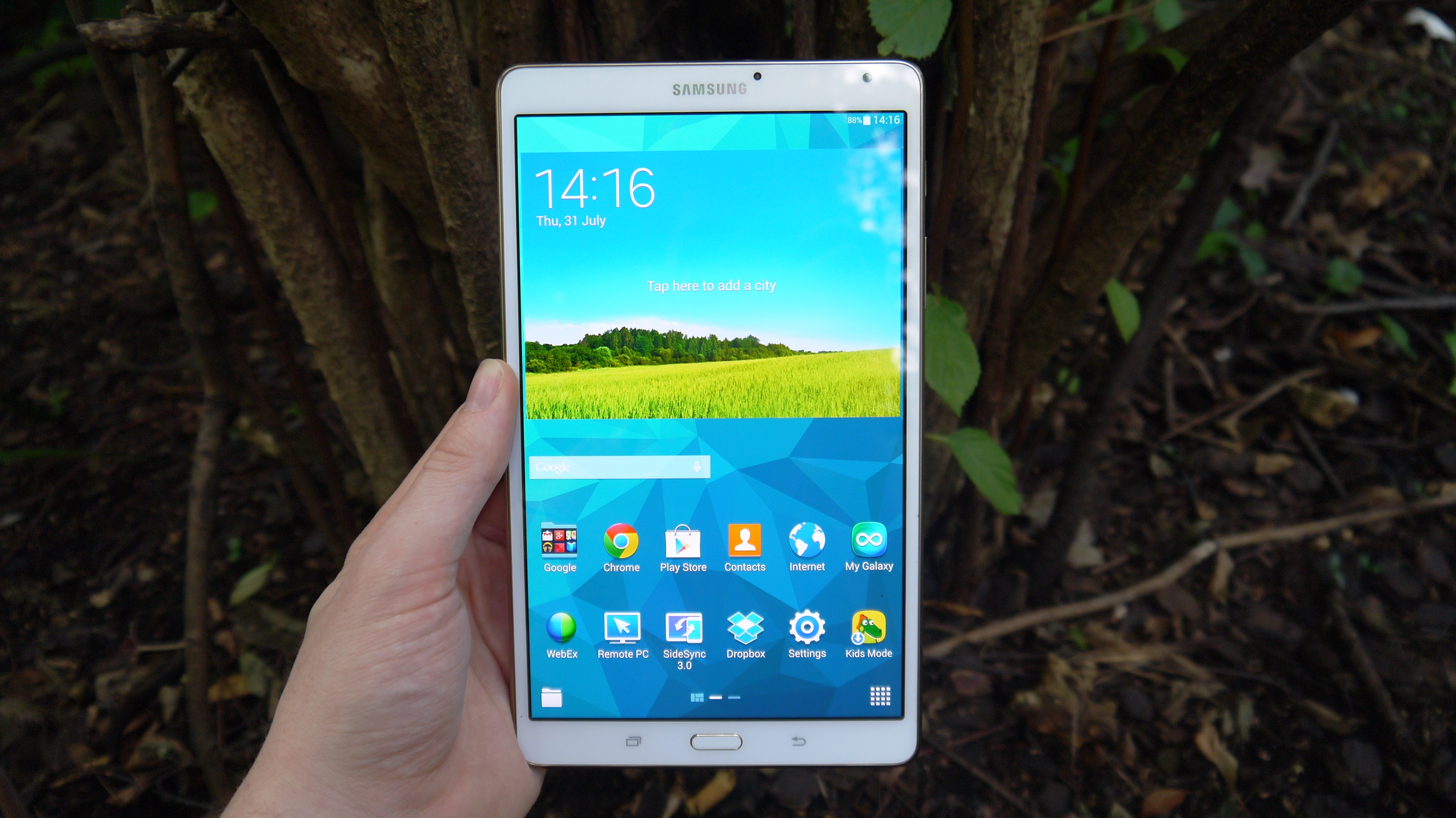
Samsung's claiming a 100,000:1 contrast ratio for the screen and I can well believe it. It may be too bright and vivid for some, but to my eyes it looks great — and you can always have a play around with the settings if you want to tone it down a little.
Samsung has included a "reading mode" and a feature called Adaptive Display to tweak the screen settings but these only work with a limited number of stock apps.
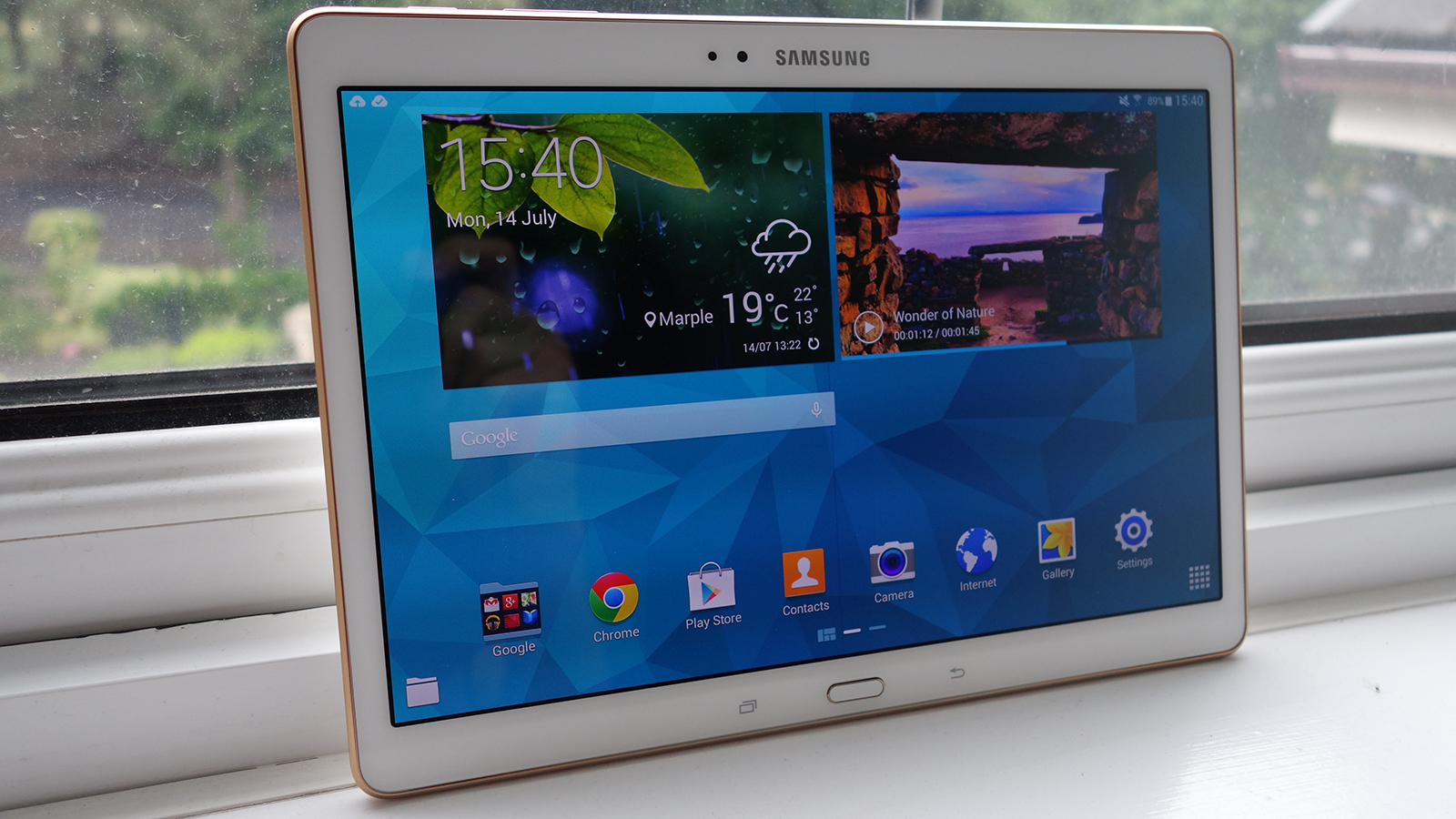
Around the sides are stereo speakers, a microUSB charging/data port, a microSD card slot, a 3.5mm headphone socket and the usual power and volume buttons. There's also an infrared port so you can use the tablet to change channels on your television or set-top box from the comfort of the sofa.
The positioning of these ports and extras is worth mentioning. Held in portrait mode, the 8.4-inch model has its power button and volume controls to the top right (like the Nexus 7) and the home button, USB port and headphone socket at the bottom.
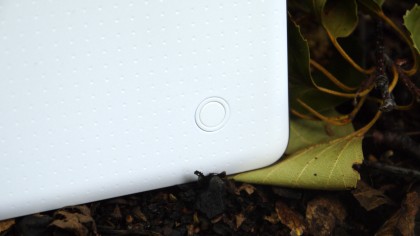
So far so obvious, but the speakers are at the top and bottom left corners, which makes sense when you turn the tablet into landscape mode for watching a film, but it still seems a little odd.
On the 10.5-inch model, meanwhile, everything changes again. Hold it in portrait mode and the power and volume buttons, as well as the charging port, are in the same place. However, the speakers have moved to the top and bottom right corners (again for landscape movie watching) and the headphone socket is up in the top right corner.
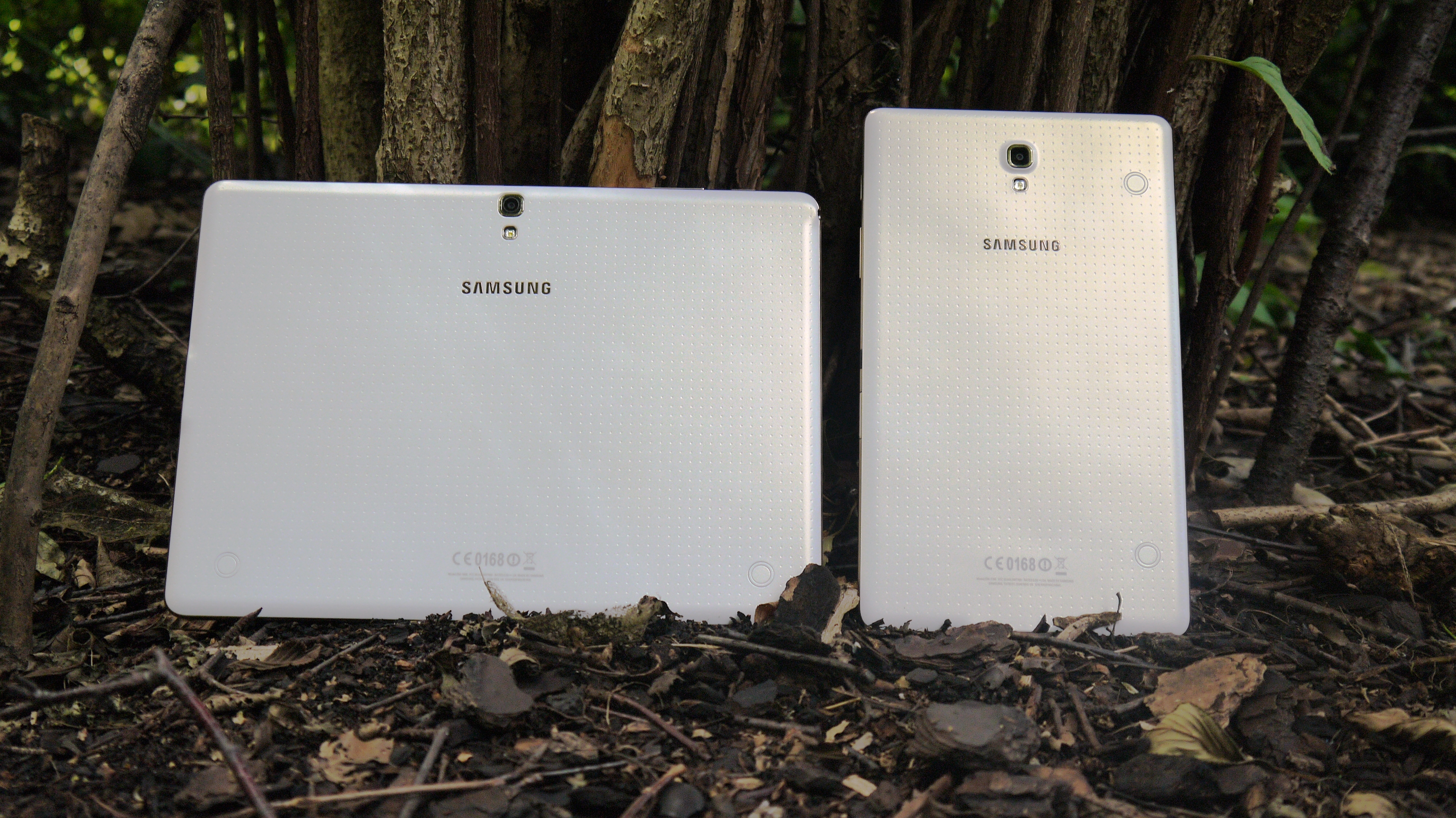
The home buttons and soft keys are placed on the left, so presumably Samsung wants you to keep it in landscape mode most of the time. That's fine, but then the power and volume controls feel oddly placed.
These design quirks aren't really major issues but they can take some getting used to if you're already comfortable with an iPad or Nexus device. They also help to distinguish the two models: the small one for single-handed operation in portrait mode, the large one for watching content in landscape mode.
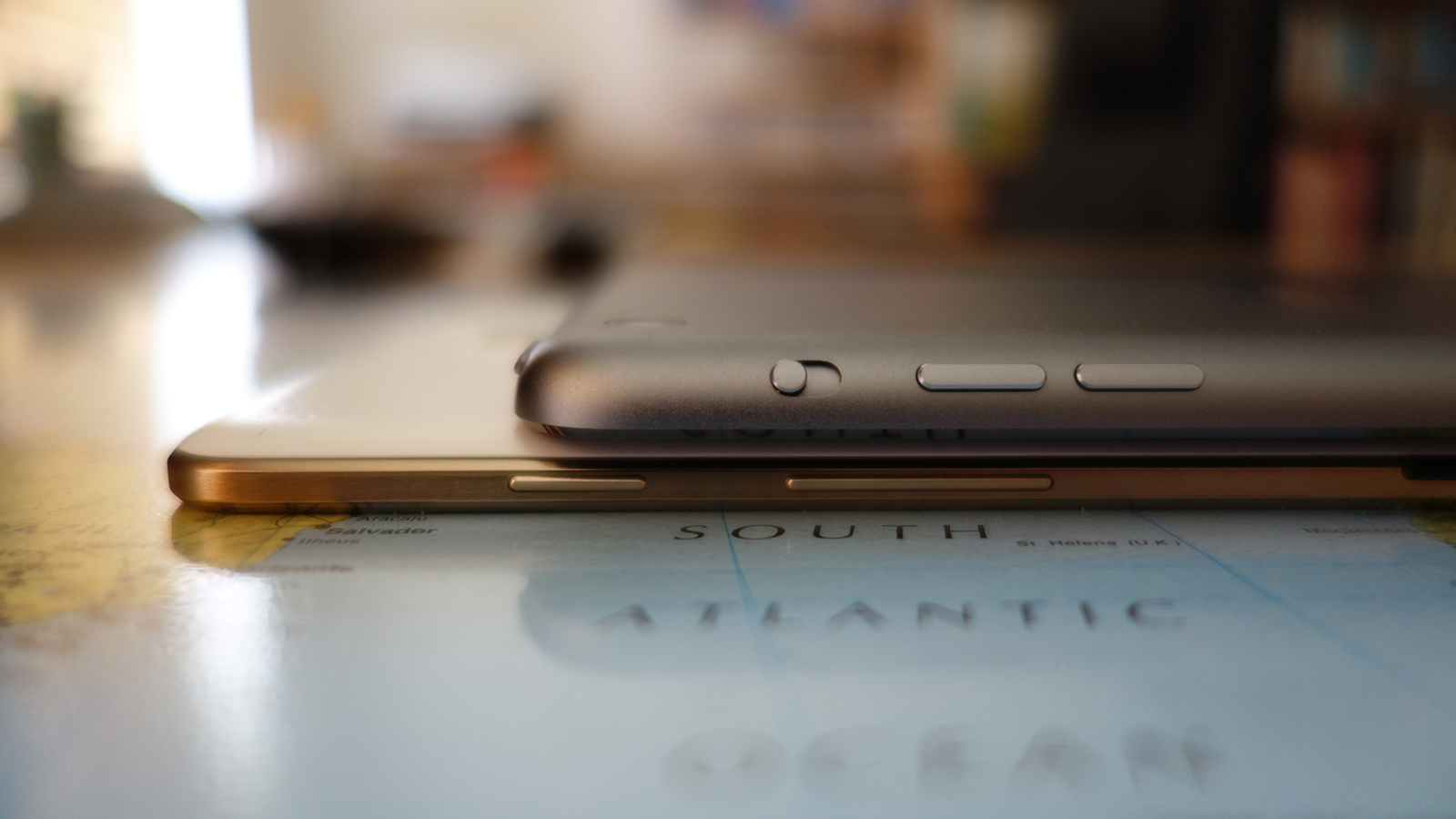
The smaller model measures 125.6mm x 212.8mm x 6.6mm, with the larger one coming in at 247.3mm x 177.3mm x 6.6mm. Both are a touch thinner than the comparable iPads — the iPad Air and the latest Retina iPad mini are 7.5mm thick — so the Samsung design team deserves some credit for that. Though the iPad Air 2 has since shown them up with a 6.1mm thick build.

Dave is a freelance tech journalist who has been writing about gadgets, apps and the web for more than two decades. Based out of Stockport, England, on TechRadar you'll find him covering news, features and reviews, particularly for phones, tablets and wearables. Working to ensure our breaking news coverage is the best in the business over weekends, David also has bylines at Gizmodo, T3, PopSci and a few other places besides, as well as being many years editing the likes of PC Explorer and The Hardware Handbook.
